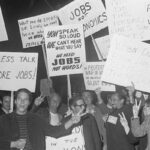It’s not unusual for people to retire in their 50s, so it’s not surprising that Lanette and Johan Canen, both 55, chose to sell their business and kick off their next stage of life.
Don’t miss
- I’m 49 years old and have nothing saved for retirement — what should I do? Don’t panic. Here are 5 of the easiest ways you can catch up (and fast)
- Thanks to Jeff Bezos, you can now become a landlord for as little as $100 — and no, you don’t have to deal with tenants or fix freezers. Here’s how
- Gain potential quarterly income through this $1B private real estate fund — even if you’re not a millionaire. Here’s how to get started with as little as $10
What is surprising is that the couple gave up not only their business but also their Hawaii home to live on a cruise ship full-time. Not only that, but they have effectively made a 15-year commitment to living at sea.
Now, you’d think that a 15-year world cruise would cost hundreds of thousands of dollars per year. But Lanette and Johan’s voyage, which includes food, drinks, WiFi and a cleaning service twice a week, comes at a reasonable price of just about $3,600 monthly, per the Daily Mail.
“We had a rented cars business which we sold to be able to afford our cabin,” said Johan to the news outlet. “People think we’re ultra-rich for being able to do this, but it’s cheaper than our rent and living costs in Hawaii. This is for normal people.”
An economical way to see the world
Last year, payment platform doxo found that Hawaii has the distinction of being the most expensive state in the U.S. based on the cost of the 10 most common household bill categories, which include housing, auto insurance and utilities.
The cost of living in Honolulu, Hawaii is 85% higher than the national average, according to PayScale. The city’s housing expenses are 219% higher and the utility prices are 71% higher than the national average, says the website.
So, it’s not surprising that Lanette and Johan were eager to ditch the expense of living in Hawaii in favor of taking up residence on a cruise ship that would allow them to travel the world.
Around seven months ago, the couple began their journey aboard the Villa Vie Odyssey, a residential vessel docking at 425 ports in 147 countries across three and a half years. So far, they have visited 25 countries.
They have been documenting their journey on YouTube and their account has acquired over 31,000 subscribers. One of the videos from earlier this year shows them enjoying two “incredible” days in Montevideo, Uruguay.
The nice thing about their itinerary is that, unlike week-long cruises, their ship spends multiple days docked at different ports. This allows them to explore local culture without feeling rushed.
“We don’t have an exit strategy, we’re both 55, we don’t need things anymore. We just want adventures and experiences. We went from owning 31 cars to none," Johan told the Daily Mail.
Meanwhile, the couple is enjoying the freedom of not having to do housework or property maintenance.
“It feels so good to have no responsibilities — we have our laundry done and get our sheets changed twice a week,” he said.
Read more: Want an extra $1,300,000 when you retire? Dave Ramsey says this 7-step plan ‘works every single time’ to kill debt, get rich in America — and that ‘anyone’ can do it
How to stretch your money to pull off your dream retirement
A recent Fidelity survey found that the average saver aged 55 to 59 has a $244,900 balance in their 401(k). For savers ages 60 to 64, that number rises slightly to $246,500.
If your savings levels are similar, you might assume it’s impossible to do what Lanette and Johan are doing. But remember, Fidelity’s numbers represent retirement savings, not total assets. And if you’re willing to unload your most valuable assets, you might be able to pull off full-time travel.
For example, if you have modest retirement savings but are willing to sell your home to access its equity, you might be able to afford a 15-year cruise journey that costs $3,500 monthly or $42,000 annually.
Granted, over 15 years, you’re looking at spending $630,000. But if you’re 62 or older, you may have monthly income from Social Security, and potentially two sets of benefits if you’re part of a couple.
The average Social Security recipient today collects close to $2,000 per month. A couple collecting $48,000 in Social Security per year could conceivably afford to spend $42,000 on a cruise ship. But they would need to make sure they have enough to cover health care expenses as well.
Of course, not everyone relishes spending that much time at sea. But there are plenty of ways you can travel and explore different parts of the country and world in retirement, even if you don’t have a ton of money or energy.
Once you retire, you might be more mobile and able to relocate to a lower cost of living area. That could free up money for travel and other experiences.
You could also decide not to own a home in retirement but rather move from one short-term rental to another in low-cost parts of the country and abroad. Depending on where you choose to live, you may also find that you don’t need to maintain a car, which could be another huge source of savings.
Another option is to buy an RV and spend your days road-tripping across the country. There will be expenses such as fuel and food, but you may find it far cheaper than living in a permanent home.
Ultimately, if you’re eager to travel when you retire, there are ways to pull it off if you’re willing to downsize your lifestyle. And you may find that once you’re immersed in rewarding experiences, you won’t miss the things you’ve given up.
What to read next
- Don’t have the cash to pay Uncle Sam in 2025? You may already be eligible for a ‘streamlined’ handshake with the IRS — here’s how it works and how it can potentially save you thousands
- Here are 5 ‘must have’ items that Americans (almost) always overpay for — and very quickly regret. How many are hurting you?
- Robert Kiyosaki warns of a ‘Greater Depression’ coming to the US — with millions of Americans going poor. But he says these 2 ‘easy-money’ assets will bring in great wealth. How to get in now
This article provides information only and should not be construed as advice. It is provided without warranty of any kind.









